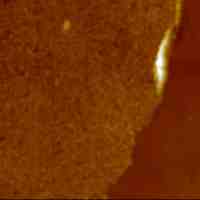
1National Nanotechnology Laboratory of Istituto Nazionale di Fisica della Materia, Dipartimento di Ingegneria dell'Innovazione, Università di Lecce, Via per Arnesano, 73100 Lecce, Italy,
2Dipartimento di Chimica, Università di Bari, Bari, Italy, and
3Istituto per i Processi Chimico-Fisici (IPCF), CNR, Bari, Italy
e-mail: laura.blasi@unile.it
URL: http://www.nnl.it
